Our pond and stream hasn’t been hard to maintain, especially since we’re more interested in maintaining it as a healthy environment, useful for wildlife, rather than as a merely ornamental water feature requiring crystal-clear water and neatly tended aquatic plants.
For the first few years, as the Aquascape instructions advised, we added bacteria every few weeks (easy to purchase in powder form), and we often used some variety of barley straw (actual straw, liquid, or pellets). We also generally planted some anacharis in the spring for extra oxygen as was recommended.
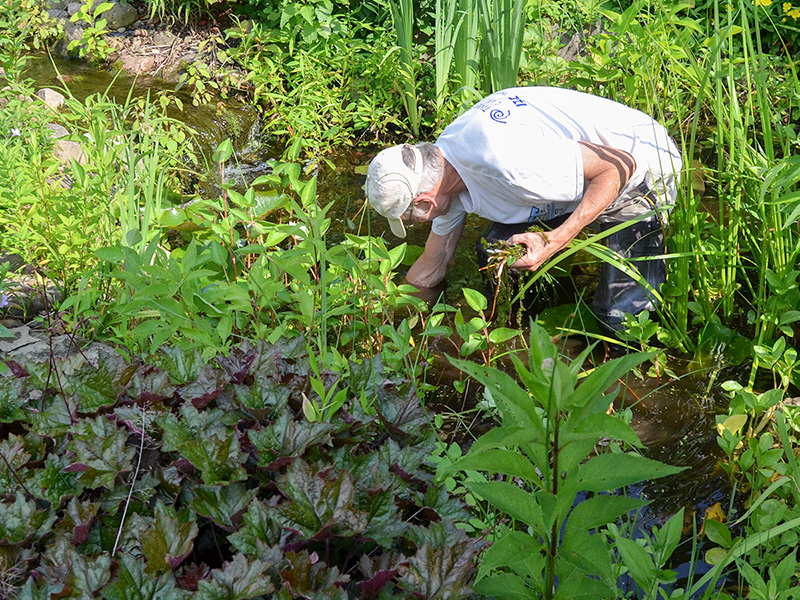
We gradually stopped doing these things (and we’re still trying to eradicate the anacharis since it takes over the whole pond). So far we haven’t noticed any problem since we discontinued these practices, although there probably is more algae than most people want.
We do remove excess plants.
Seasonal maintenance
Although the system is designed to run all year, it’s much easier in our cold climate to just bring the pump inside where it spends the winter in a bucket of water in the cellar. We also bring in the filters and bag of lava rocks, which we clean each spring before putting back into the BioFalls. That’s about it.
Cleaning
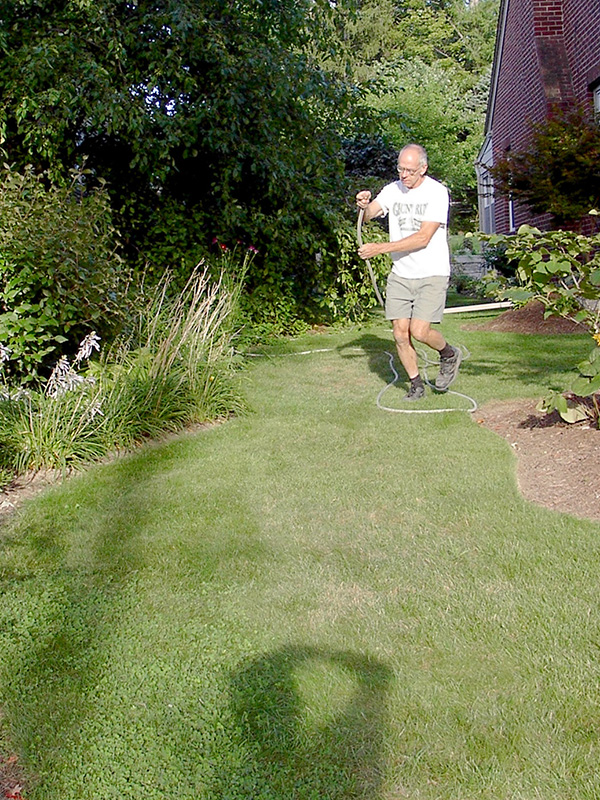
Cleaning the pond involved draining the water, then refilling it. We used the water from the pond to water the plants in the front yard, which let gravity do the work since it’s at a lower elevation than the back yard. We just got it started by siphoning it. For the first few years, we cleaned the pond every year, as the directions say.
Then, since we were concerned about the dragonfly larvae and other tiny creatures that would be lost in the cleaning, we tried just leaving it to see what would happen.
(By the way, this also reminds me that I’ve improved my photography a bit in the years since then. I might notice my shadow in the photo now!)
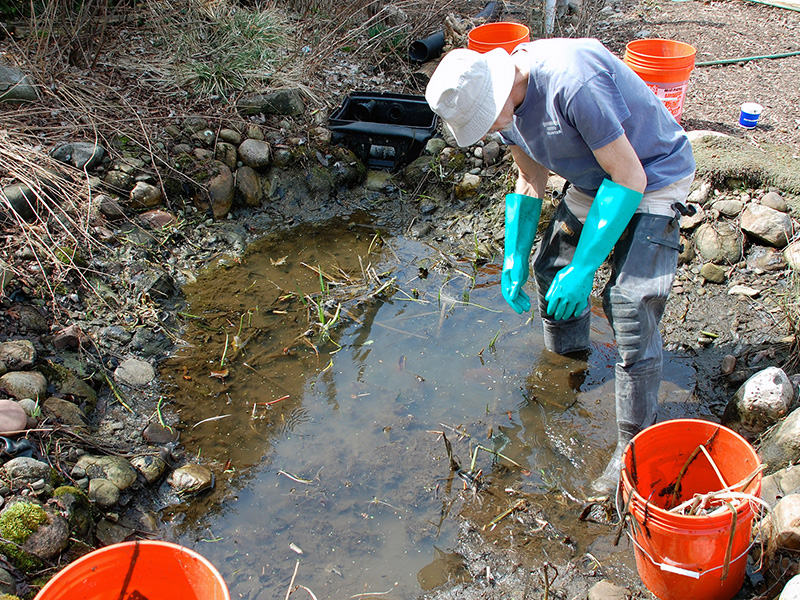
After a couple of years we found that the plants became too thick and the water became too cloudy. We decided to clean it out, but only because it seemed overgrown.
Since 2012, we haven’t drained it at all. John bought some fisherman-style hip boots, so he just walks in and pulls what is needed, stepping very carefully since it’s not a flat surface.
“We” (that is, John) do get in there and remove extra plants. Those buckets? We put anything we remove in buckets, wait for it anything like dragonfly larvae to settle out, and then check to be sure we aren’t discarding any dragonfly larvae or other little creatures.
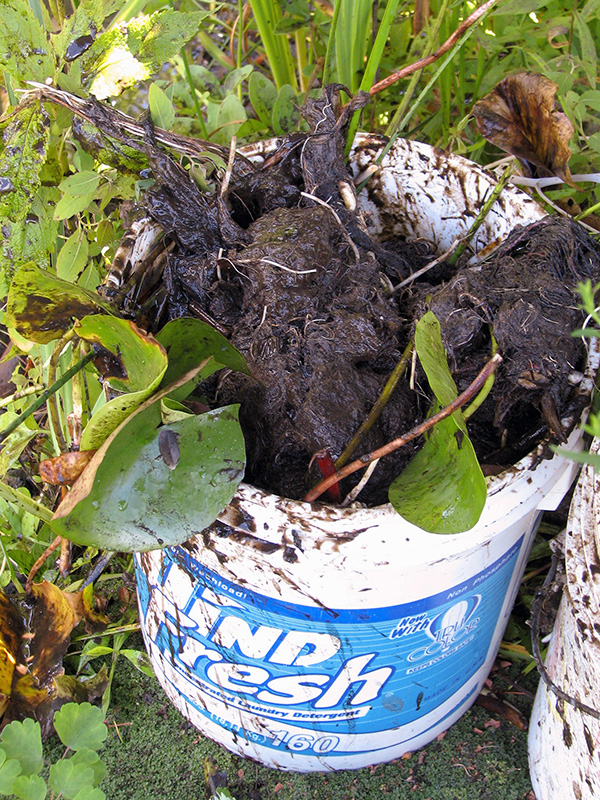
Here’s some of the content of what has been removed.
Before throwing this stuff on the compost pile, I inspect it for any dragonfly larvae or other living creatures. I put them back in the pond. Some of them can be pretty tiny so I examine it pretty carefully.
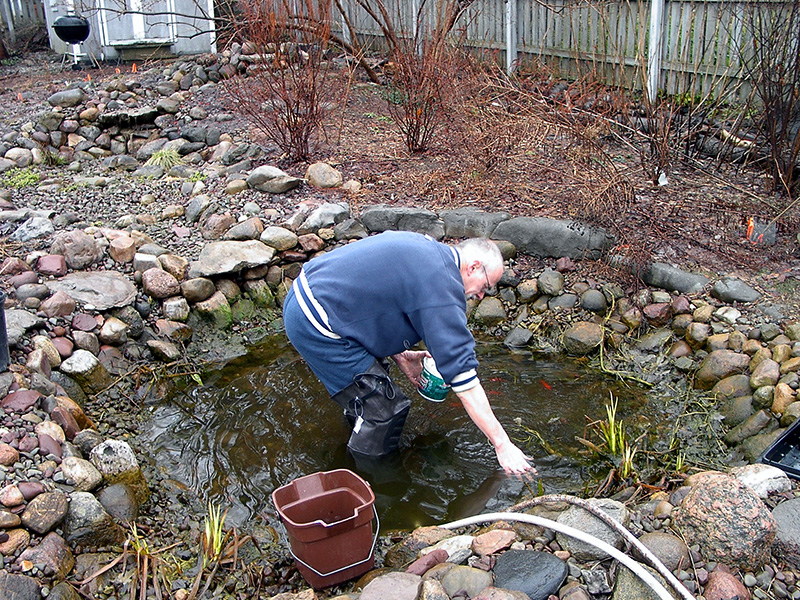
With the water level down, it was our chance to remove some of the extra plants.
For the last few years though we have just pulled out these plants without removing the water.
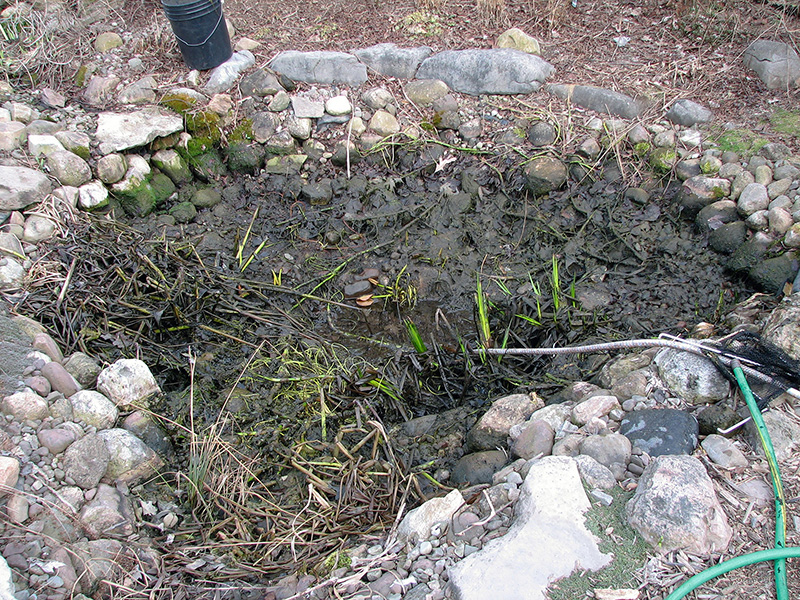
This is what the pond bottom looked like after a number of years. We could no longer see very many of the stones on the bottom.
Thinning plants
It was easy to pull out plants along the side, but we really prefer having plants along the side and just water in the middle.
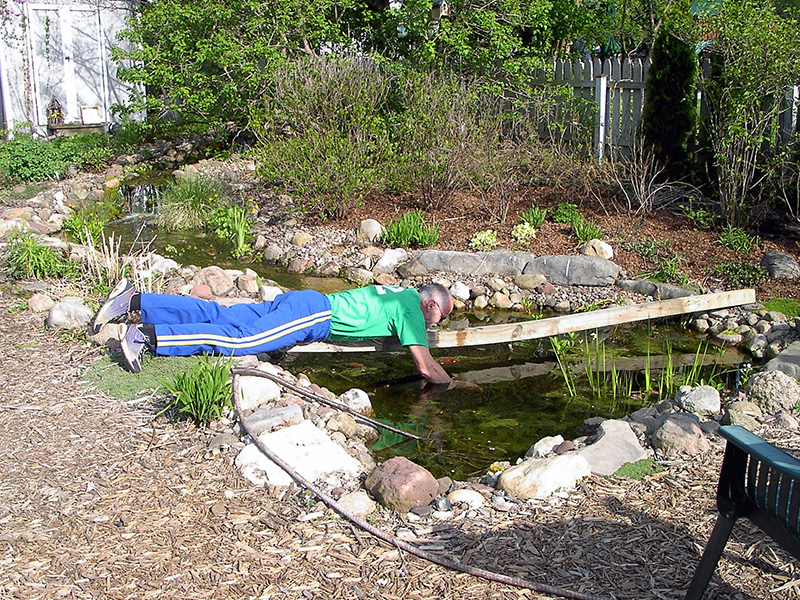
The first time, we just spanned the pond with a plank, which allowed us (and by “us” I mean John) to get to the plants in the middle.
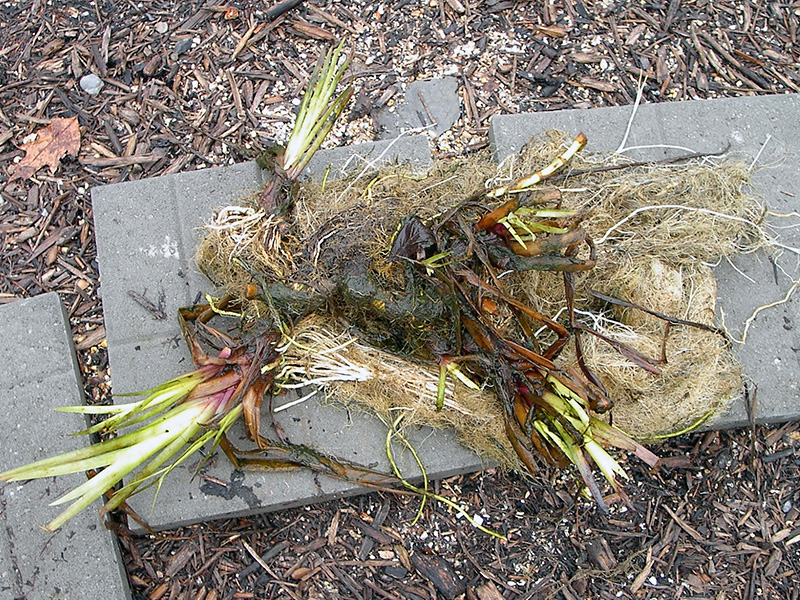
Aquatic plants grow vigorously. We finally decided we needed to thin them out, even though we weren’t planning to do a whole pond cleaning.
It’s not always easy to pull out aquatic plants. Look at the mass of roots they develop!
Equipment
We have had to replace the pump — not surprising for a piece of equipment that runs day and night for eight months a year! We now (in 2020, 18 years later) are on our third pump, which we think is a reasonable replacement rate. The rest of the components still seem to be fine. All in all, a great investment!
Resources
- Critters in Your Pond:
Reflections
Algae is as natural to a pond as rain is to a summer storm. Every new pond will soon gather algae. When ponds are new, algae is the dominant plant, but as fish and other aquatic creatures reach a balance, the water will start to clear. Don’t be upset about the lack of crystal-clear water because water that is clear is dead water. A healthy pond will always have tiny freshwater plankton consisting of protozoa and algae suspended in the water. The goal in a pond for wildlife is to maintain a balance.
~ Craig Tufts and Peter Loewer, Gardening for Wildlife, p. 91
